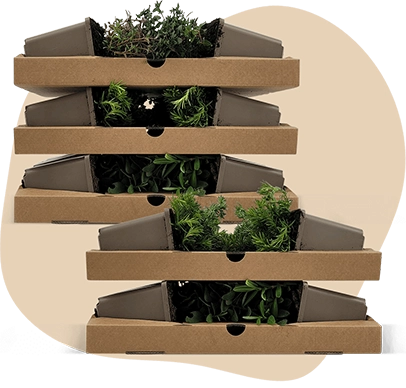Description
Ribes odoratum C12 80-100 | Clove currant
The Ribes odoratum, commonly known as the Clove currant, is a delightful shrub with an upright growth habit. This plant typically reaches a height of about 200 cm and can spread to a similar width. The Clove currant features green leaves that are smooth to the touch and emit a pleasant fragrance. Although it is not evergreen, it is known for its vibrant autumn colours. The plant is relatively low-maintenance and produces small, edible fruits. Its appealing scent and ability to attract bees and butterflies make it a charming addition to any garden.
Key Plant Characteristics of Ribes odoratum
- Ribes odoratum blooms from March to May, showcasing delightful yellow flowers that are highly attractive to bees and butterflies. The flowers are fragrant, adding a pleasant aroma to the garden.
- This plant thrives in sunny to partially shaded locations, making it versatile for various garden settings.
- Ribes odoratum is adaptable to all soil types, provided the soil is well-drained to ensure optimal growth.
- The shrub features an upright growth habit with green leaves that transform into beautiful autumn colours.
- Its branches and bark are sturdy, supporting the plant's compact growth.
For those looking to enhance their garden with
garden plants, Ribes odoratum is an excellent choice due to its fragrant blooms and ability to attract pollinators.
Application of the Ribes odoratum in the Garden
The Ribes odoratum is a versatile plant that can enhance various garden settings. Its upright growth habit makes it suitable for different uses:
- Ideal for solitary planting, creating a striking focal point.
- Perfect for hedges, providing structure and privacy.
- Works well in borders, adding height and colour.
- Can be grown in pots or planters, making it a great choice for balconies or terraces.
This plant is winter hardy, tolerating temperatures as low as -28.9°C, making it a reliable choice for colder climates. It combines easily with other plants, especially those that thrive in sunny or partially shaded areas. Consider pairing it with
shrubs like lavender or rosemary for a harmonious look. The Ribes odoratum's greatest ornamental value lies in its fragrant yellow flowers, which attract bees and butterflies, and its beautiful autumn foliage. When considering purchasing plants for the garden, this species offers both beauty and resilience.






















